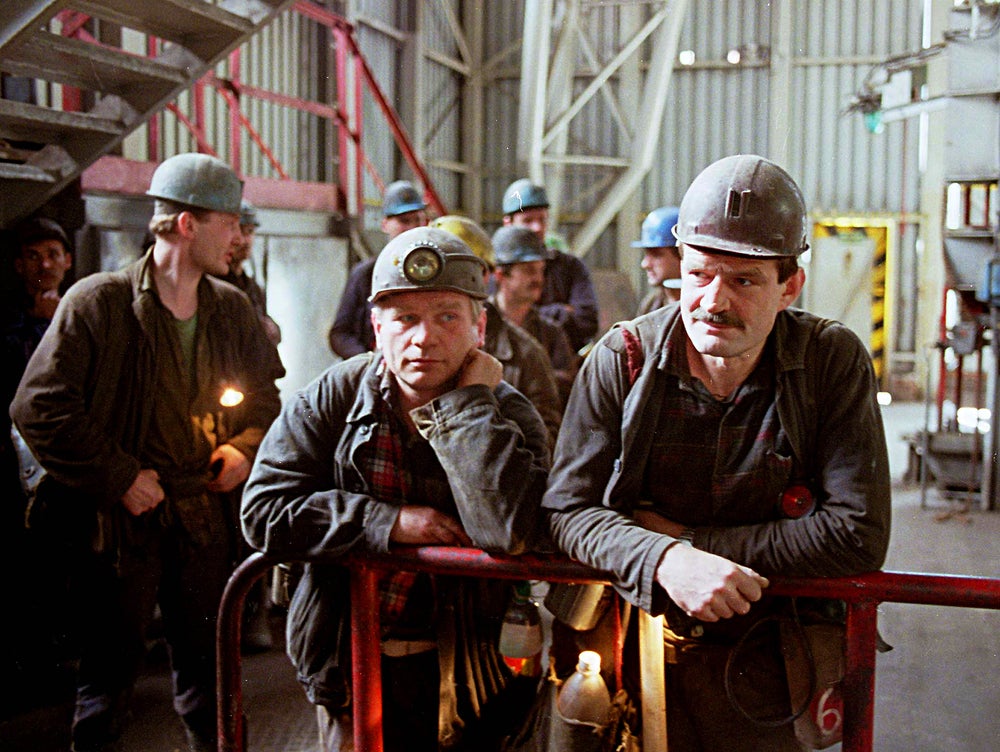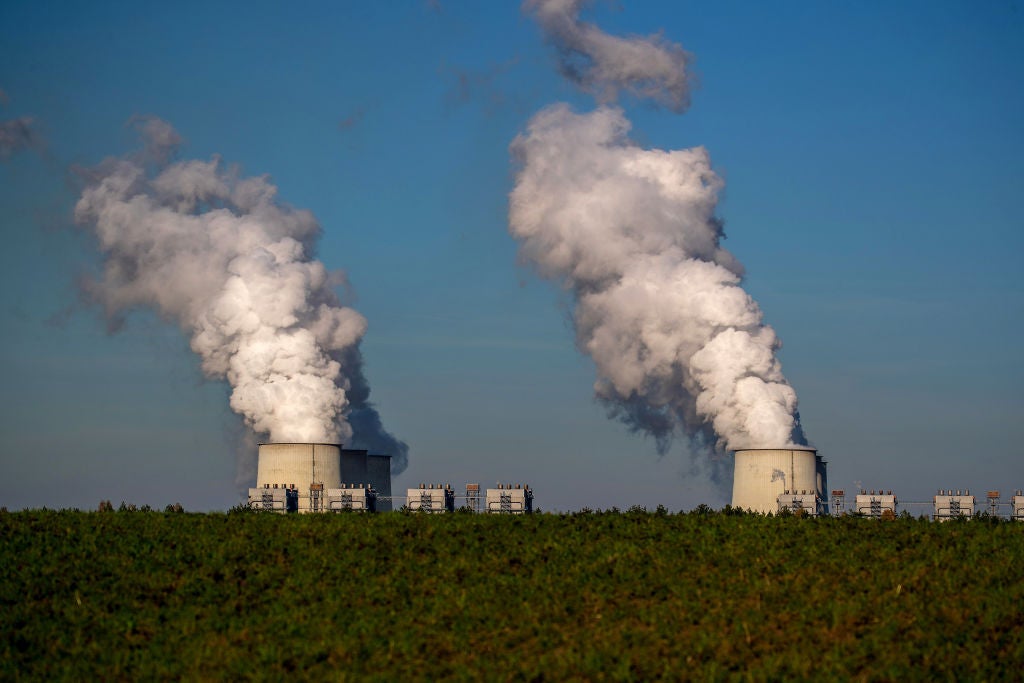Poland produces more coal than any other country in the EU. For southern Polish towns like Libiąż, coal runs as deep through the culture as the rich seam of fossilised carbon runs beneath the ground. In many ways, Libiąż is a mere extension of the Janina coal mine that sits two kilometres away, so vital are the mine and its waste heap to the town’s economy.
However, the spectre of Poland’s inexorable transition to clean energy has long loomed over the town’s prospects. Aiming to avoid the impending economic devastation, municipal leaders, mine managers, trade unions, business leaders and community activists are teaming up – with the help of the World Bank’s Just Transition initiative – to transform Libiąż from a fossil fuel bulwark into an environmentally and socially sustainable economy. This includes finding new vocations for its industrious and hardy coal community.

Thermoplast, a local plastics processing and recycling company, has been one of the beneficiaries. The company has actively recruited and invested in Libiąż’s former miners. “We are constantly looking for new products and new technologies, and for this we also need people,” Piotr Dyba, a Thermoplast management board member, told the World Bank in autumn 2022. “The employees who come to us from the mining industry [are] the most useful employees.”
This symbiotic relationship did not come about by chance. It is the product of years of planning and cross-sectoral partnerships from an array of local stakeholders.
This same story is currently unfolding in fossil fuel communities all over the world, from the Appalachian coal miners of the West to the Siberian oil workers of the East. The stakes could not be higher; how these transitions are planned and managed will be the difference between a thriving community and a ghost town. Luckily, templates are now emerging demonstrating how to do it right.
See Also:
“Matching the skill sets of today with the opportunities of tomorrow”
The transformation to a decarbonised, clean energy–fuelled world will cause tectonic shifts in the global workforce, requiring the widespread retraining and redeployment of the world’s fossil fuel workers in a ‘just’ transition. The energy sector employs more than 65 million people, with 32 million working in fossil fuels – around 1% of the global workforce. “But we have a huge skills bottleneck in terms of the labour to build the wind turbines, the heat pumps, the renovations, etc.,” says Pieter de Pous, leader of the Fossil Fuel Transition Programme at environmental think tank E3G. “Decarbonisation is going to be a very labour-intensive process.”
How well do you really know your competitors?
Access the most comprehensive Company Profiles on the market, powered by GlobalData. Save hours of research. Gain competitive edge.

Thank you!
Your download email will arrive shortly
Not ready to buy yet? Download a free sample
We are confident about the unique quality of our Company Profiles. However, we want you to make the most beneficial decision for your business, so we offer a free sample that you can download by submitting the below form
By GlobalDataUnder the International Energy Agency's (IEA) Net Zero by 2050 pathway, the transition to net zero brings substantial new opportunities for employment, with 14 million jobs created by 2030 thanks to new activities and investment in clean energy. Spending on more efficient appliances, electric and fuel cell vehicles, and building retrofits and energy-efficient construction would require a further 16 million workers. However, these opportunities are often in different locations, skill sets and sectors than the jobs that will be lost as fossil fuels decline. In the pathway, around five million jobs will be lost.
Changes are already under way, with around half of the global energy workforce now employed in the clean energy sector. However, “though clean energy sectors will bring many new jobs, they will not necessarily be in the same locations, require the same skill set, or be of the same pay or quality as those that are lost”, concedes Divya Reddy, an energy analyst at the IEA. “So matching the skill sets of workers today with the opportunities of tomorrow will be a large undertaking with many initiatives and training schemes needed to meet the challenge.”
Lighting the way
A recent IEA report showcases some real-world initiatives that are rising to the challenge. It demonstrates that first, workforce mapping exercises can provide clarity on employment in a region, allowing for better targeted policies; second, collaborative approaches between government, industry and workers – such as in Libiąż – produce the strongest results. “Any [just transition] programme needs to regenerate a community and not just create jobs,” says Nick Pesta, an associate at the think tank RMI.
As the most carbon-intensive fossil fuel, coal has been hit hardest by the energy transition. The coal industry employs around 6.3 million workers worldwide – predominately in mining, but also in the transport, washing and processing of coal, as well as the manufacturing of specialised mining and conveying equipment. However, over the past decade, the coal industry has declined considerably in North America and Europe, and the likes of Spain, Canada and the US have found successful approaches to redeploying their coal workforces.
“The Spanish approach was very cooperative with the unions, who recognised there was no future in fossil fuels,” says de Pous. “There was an inclusive process that developed a plan involving retraining, reskilling, early retirement – the whole lot – and it has led to some very fast retiring of coal mines and plants.” Spain aims to phase out coal by 2030.
Spain’s Just Transition Strategy picks out green vocational training as a key focus. It identifies territories with the greatest short-term vulnerabilities and proposes an ‘Urgent Action Plan for Coal Regions and Power Plants’ to address them.
Spain is implementing regional ‘Just Transition Agreements' for coal power plants between the government, companies and workers (represented by the trade unions). The agreements commit the national government to collaborate with the Spanish National Employment Service to offer affected workers vocational training and help finding a new job. They also call on coal plant owners to relocate workers where possible and to give them priority access to new jobs in restoration and decommissioning. As part of this, the companies commit to upskilling and reskilling programmes.
In April 2020, Endesa, Iberdrola and Naturgy, operators of closing coal plants, signed a Just Transition Agreement to protect 2,300 workers at 12 plants. In March 2021, EDP joined the agreement, bringing the total to 3,000 workers at 15 plants.
As an example of the Just Transition Agreements working in practice, in January, Endesa announced training courses that will begin in February 2023 as part of the company’s 'Futur-e' plan, in an effort to support local jobs while dismantling its coal plant in Carboneras and installing renewables facilities. Endesa has set aside more than €150,000 ($159,413) for the training courses in Carboneras, which will benefit 500 people. The company is planning to build over 1,200MW of renewable generation in Almeria, which could offer job opportunities for workers from the Carboneras plant.
Across the Atlantic, the US POWER Initiative looks to direct federal assistance to communities and regions facing job losses from the coal sector’s decline. Since 2015, POWER – today spearheaded by the Appalachian Regional Commission – has invested more than $319m in 395 projects in 358 coal-dependent counties throughout the Appalachian region (which produces the lion’s share of US coal). These investments are expected to create or retain more than 36,600 jobs and leverage more than $1.5bn in private investment into the area.
Coal is not the only fossil fuel living on borrowed time, however. Oil supply actually boasts the highest employment among fossil fuels, at almost eight million workers in 2019, of which five million work in extraction and production, and around 1.4 million each in transport and refineries. Many countries have realised that the skills of oil and gas workers can be transferred to other energy types. For instance, petroleum engineering is pertinent to geothermal drilling, while chemical engineering is relevant to the production of clean fuels and hydrogen. Offshore skills come in handy for offshore wind, carbon capture and storage and offshore hydrogen production. Meanwhile, oil and gas power plant operators, turbine manufacturers and construction workers can apply their skills to clean energy power plants.
The UK government has reached an agreement with its North Sea oil and gas industry to manage the economic transition and transformation of the region and its fossil fuel workers. The North Sea Transition Deal foresees public and private investments of up to £16bn ($19.7bn) by 2030 in clean energy technologies, a voluntary commitment by the sector to source 50% local content for energy transition projects by 2030, and support for up to 40,000 direct and indirect jobs as part of efforts to decarbonise offshore oil and gas production.
The North Sea Transition Deal's commitment to employment includes reskilling existing oil and gas workers in technologies such as carbon capture, utilisation and storage, hydrogen production and offshore wind. However, the initiative also notes the need for a deeper understanding of the future skills profile of these new industries. To that end, an Energy Skills Alliance has spearheaded work on detailed mapping of energy subsectors’ current capabilities and future needs.
It is not just governments devising these schemes. BP’s Aim 12 programme aims to support a just energy transition that “delivers decent work, quality jobs and supports the livelihoods of local communities”. That includes initiatives to build skills for the future energy system, working closely on recruitment for future needs, and building career pathways and offers for employees who are interested in moving into new areas of the business. For example, BP and EnBW have committed more than £1m over five years to X-Academy in Scotland to finance the reskilling of oil and gas professionals as well as the creation of new entry-level roles related to the energy transition.
A just transition for fossil fuel workers: “We've done this before”
These initiatives are a good start, but there are some missing pieces in the puzzle. Charlie Bloch, a principal at RMI, believes there should be a shared international database that documents the skills required for clean energy industries, as well as for a more digital and automated economy. “Communities shouldn't have to start from scratch in imagining what their economic opportunities are in a regenerative or sustainable economy – because it is a heck of a lot more than just clean energy jobs,” he says.
“There are a couple of software companies that are trying to do this," he adds. "ETH Zurich [a university] and SkillLab [an Amsterdam-based tech start-up] are doing some really interesting work on skill assessment and categorisation.”
[Keep up with Energy Monitor: Subscribe to our weekly newsletter]
Achieving a truly just energy transition for fossil fuel workers will be a Herculean challenge. “The slogan ‘leave no one behind’ sounds good, but there has never been a transition in the history of mankind where someone has not been left behind,” says de Pous.
“But it is an addressable challenge,” insists Bloch. He points out that the pace of economic and technological systems change has steadily increased in recent decades. For instance, while it took 40 years for the US to reach market saturation for landline telephones, the same process took ten years for mobile phones. “You had people working on the old telephone system who were similarly having to be reskilled," he says. "At the same time, the new mobile phone industry needed those workers, and more. So, we have done this before – every time is different, but the dynamics are very similar.”
There will always be pathfinders who light the way. Back in Libiąż, Thermoplast now employs 163 people and has grand plans for expansion. “We see development opportunities here,” says Dyba. “In 30 years, we will have a thriving economic zone.”







